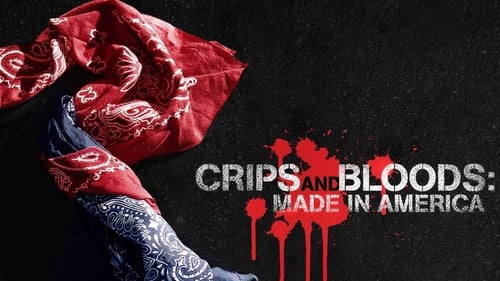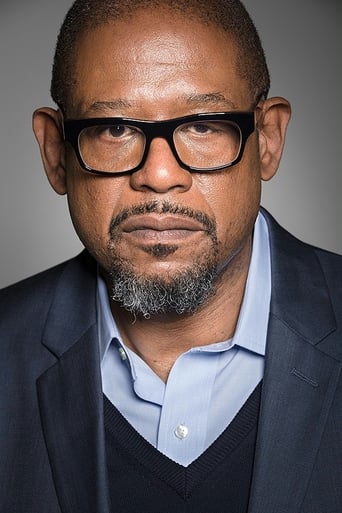ChanFamous
I wanted to like it more than I actually did... But much of the humor totally escaped me and I walked out only mildly impressed.
Kaelan Mccaffrey
Like the great film, it's made with a great deal of visible affection both in front of and behind the camera.
Geraldine
The story, direction, characters, and writing/dialogue is akin to taking a tranquilizer shot to the neck, but everything else was so well done.
bdgill12
"Made in America" centers around the inception and subsequent development of the Los Angeles gang culture. Director Stacy Peralta immersed himself in the gang neighborhoods of L.A. and spent months getting to know the members themselves before even turning the camera on his subjects. Peralta begins with interviewing the founders of both the Bloods and the Crips (the most notorious of American gangs) to provide a background for how the gangs came about. As the documentary progresses, Peralta and narrator Forrest Whitaker push further into the current gang scene and allow the viewer a glimpse into what it's like in the highly volatile and bloody war.I'm not completely sure when the war between the Bloods and the Crips took hold of America but pretty much everyone my age (27) was inundated with news on this phenomenon as children. Other gangs may have been just as prevalent in terms of membership and overall damage to society, but none of them had the impact of these two groups and that reach of influence spread across the country by the time I was in grade school. When I was in the third grade I knew more about the Bloods and the Crips than I did about the American system of government. We had school programs about the dangers not just of gangs but of the Bloods and the Crips specifically on what seemed like a weekly basis. By high school that influence seemed to have waned a bit but the lasting impression of the gang lifestyle was left in my psyche so you can imagine my interest in "Made in America." Unfortunately, "Made in America" is a flawed documentary. As opposed to "Bigger Stronger Faster" which gave time to both sides of the argument, "MIA" works entirely from the perspective of the gang members without any regard to what other opinions might be. That is to say, if you watch "MIA", prepare for a steady stream of blame directed at the White Man and the government. Right or wrong, the opinion of the founders of the Bloods and Crips would have you believe that the formation of their gangs was the result of extreme prejudice and the only solution they had at the time. The other side of that argument is never presented. In addition, we get no delving into the money side of the gang war, the drugs and guns, which would have been an extremely interesting segment.Still, "MIA" does provide a valuable insight that we rarely get and the fact that Peralta was able to get this amount of access is incredible. More often than not, real life looks at gang members feature covered faces and auto-tuned voices whereas "MIA" gets you up close and personal with the gang leaders. The increased level of violence and brutality that gangs have seen over the decades was of particular interest. When originally founded, the L.A. gangs served as a sort of social club for black youths who had nowhere else to turn. The fights between the gangs usually involved pugilism and rarely resulted in a serious injury or fatality. The introduction of guns into this battle, however, forever changed the face of the rivalry and pushed the gang war into the American consciousness. It is a sobering and cautionary piece of storytelling. Peralta puts the finishing touches on "MIA" by giving the mothers of gang violence victims some face time and allowing the impact of such a senseless and futile battle to sink in. "Made in America" is not a great documentary and could have given us more, but it is nonetheless, it illustrates a compelling and significant history.Check out my site: www.thesoapboxoffice.blogspot.com
Polaris_DiB
What's up with those Crips and Bloods? Can't they, like, just get along and, like, not kill each other? Why do they do that? Well, because they're the product of decades of segregation and isolation into under-developed, falling-apart communities that are treated as virtual No Man Lands within the very city of LA. How did this happen? Well, it some of it can be traced back all the way to World War I.....Stacy Peralta's "Crips and Bloods: Made in America" starts out with some pretty stunning information. More people have died in gang battles between the blue and the red than in some third world events we in the first world label "genocide." Many of the citizens of the areas the Crips and Bloods inhabit have lived their entire lives without seeing the Pacific Ocean due to the invisible barriers that separate them from the world. These factoids are inserted in many compelling ways in a documentary that tries, with variable success, to really present the core of the issues of these gangs running around in South Central.The idea is good, the execution is a little off. Despite the title of the movie, the genesis of the actual gangs is passed by in a quick and uninformative way while more focus is put onto the history of the area itself and its relations to civil rights. That's not too big of a deal, but over-stylized digital effects and a constantly moving camera attempt to make what is a real social issue into something more resembling a hip-hop or skater video. I think the attempt was largely to put more animation into what is otherwise a lot of still photography and talking heads, but sometimes it can get distracting and a lot of the meat of the documentary has to compete with this weird tendency in the editing to intercut with sped-up montages. The more effective parts are the parts where you can hear the director interviewing. I think the best scene is when Peralta asks, "Well, what about morality?" and his interviewee basically says, "We have to put morals behind us just to survive." It's easy from an outside perspective to believe that the gang problem is an issue of a community of people being irresponsible and stupid, but it's harder to understand how the problem was developed from decades of negligence.I think, for all the flash, that this movie has some good ideas and decent journalism, but needed a bit more research and a better plan of execution. Ultimately, it's a very glossy rough draft of a video essay, and some more information is needed. At least it has an optimistic conclusion with an idea of how things could be turned around, which is something most social documentaries evade and need more of.--PolarisDiB
philtron2002
I was lucky enough to be part of a select crowd last week to see the Los Angeles premier of "Made In America" in the center of downtown LA. The atmosphere was charged with excitement as many of the characters who appeared in the film were there to see it, many for the first time. Though there were were sound issues early, the power and integrity of the film could not be masked. This is such an important film. It is so easy to live in this city, sitting back in condos in Sherman Oaks or fancy houses in Brentwood, and have no idea that a whole other city exists just south of the 10 freeway. Early on in the movie a number is thrown out; fifteen thousand gang related homicides in the past twenty years. Think about that for a moment. If that was happening in any other country, to any other race of people, there would be an out cry to the UN. In Los Angeles, it's just another day. Turn the page and see what Britney did this time. This is a story that needs to be told. The people of Los Angeles need to hear this. I heard some talk at the end of the film that they may try to show this in the LA school system. I hope that this happens. Knowledge is power. And, there is a message in here that needs to be shouted from the roof tops.I have seen some critics try to attack Stacy Peralta, suggesting that a white, former surfer/skate boarder does not have the right to tell this tale. I would ask, if not him, then whom? Who else has stepped up to put their reputation on the line, to go into these neighborhoods with an open mind and open heart, and sacrificed years of their life to give a voice to this condemned segment of society? This has been Stacy's most ambitious project to date. I applaud his efforts and congratulate him on shedding light on a subject that most of America would rather ignore.Please go see this film. Please tell your friends. It's not a romantic comedy. You will feel it in your guts for the next week or so. But, it's worth it, I promise.
jrdfrnk
Saw this movie last night at Sundance at BAM. I thought that I would get a look at the history, structure, economy, and cultural legacy of gang-life in LA. This movie didn't deliver on any of these fronts. Instead of history it just ran over the broad-strokes of black oppression on the west coast. Instead of gang's organizational structure it just talked a lot about finding a family and not having a father figure. Instead of the economy of drug- selling it just talked about how crack totally messed stuff up. Instead of cultural legacy it just flashed a bunch of pictures of west-coast rappers and had a hip-hop inspired soundtrack.Throughout the film there are constant montages of hyper-masculine men, showing off their muscles, guns, and clothes. After awhile, we can't help but question the filmmakers leering, homo-erotic/homo-phobic view of these gang-members. We rarely learn anything concrete about them. They rarely tell us particular stories, facts, or credible statistics. Instead we are presented with their hyperbolic exaggerated rants about how tough they are. It reminds me of some of the AA meetings I've attended, where former alcoholics brag about how high, drunk, messed-up they got in a way that seems to relish the very self-destructive aspects of their lives they now pretend to critique. In the end, this is one of those movies that can't get enough of the guns, blood, and violence culture, it pretends to disapprove of.


